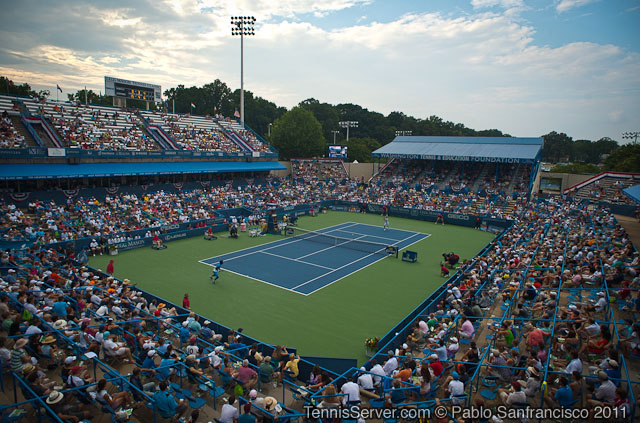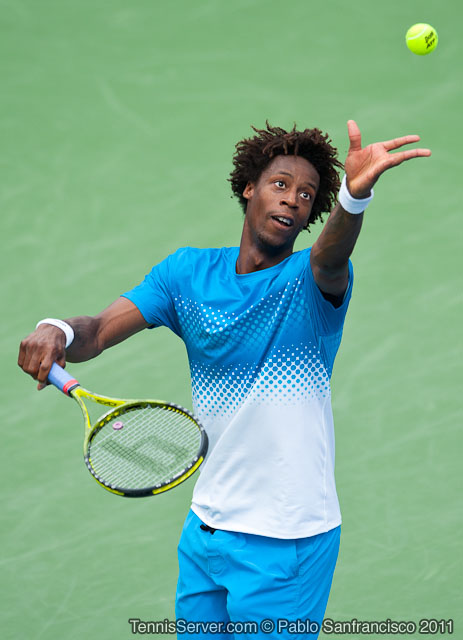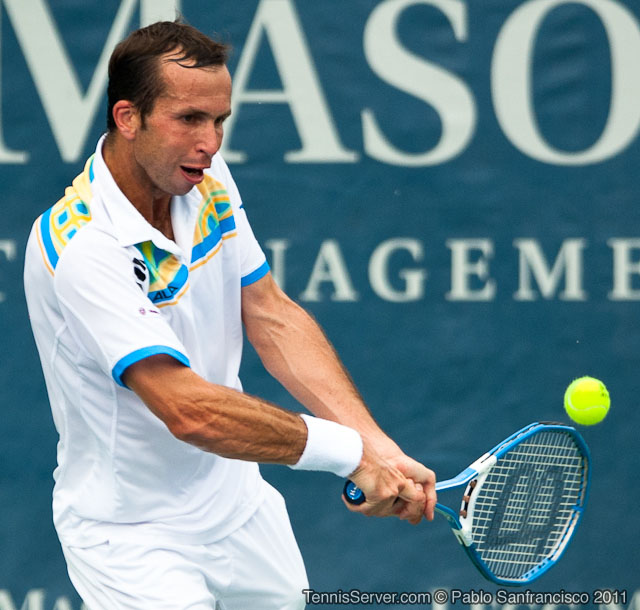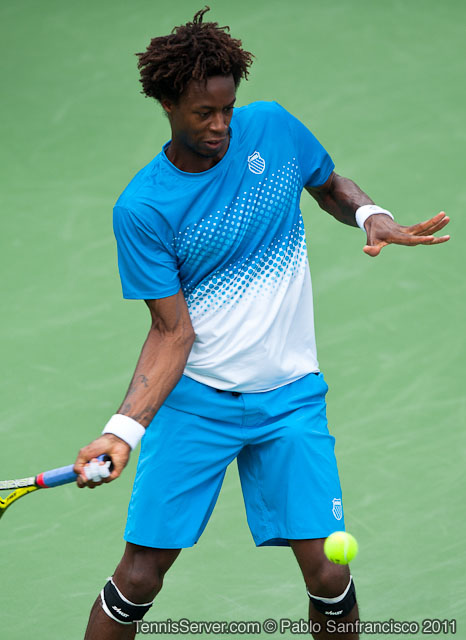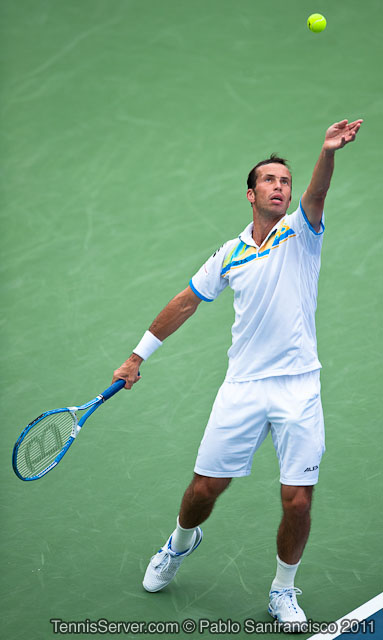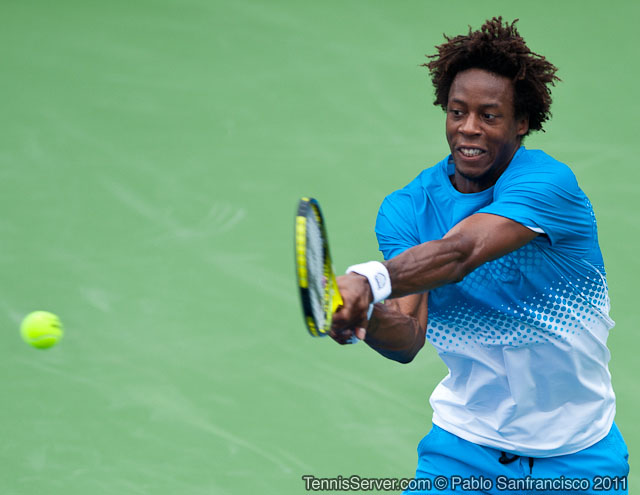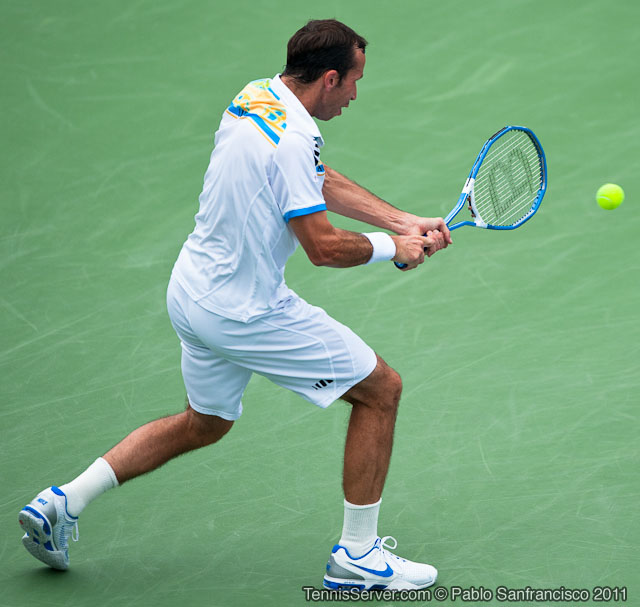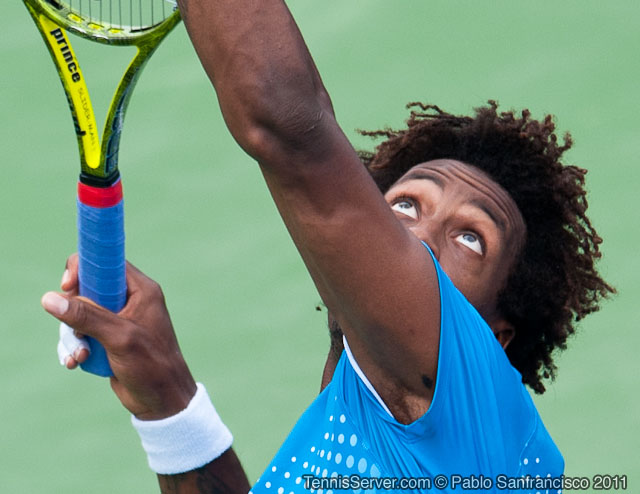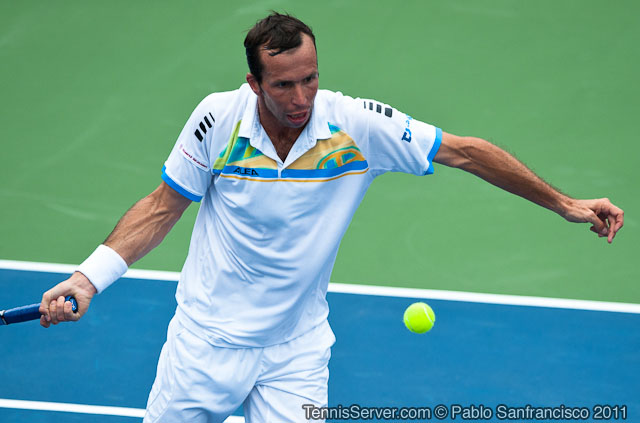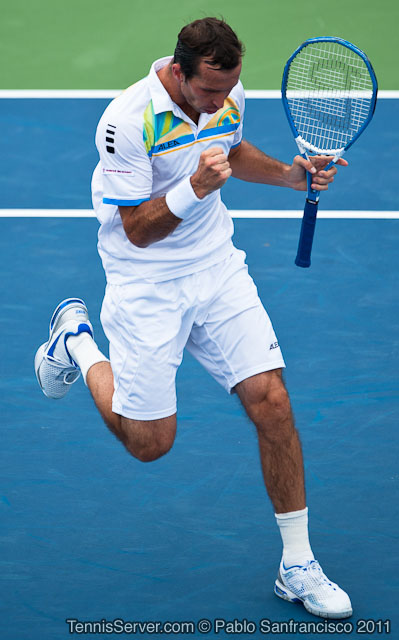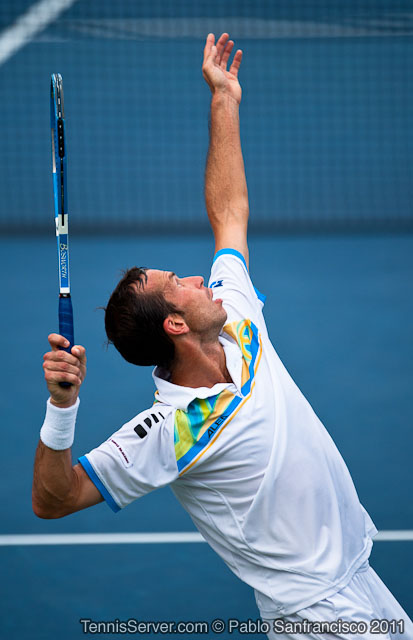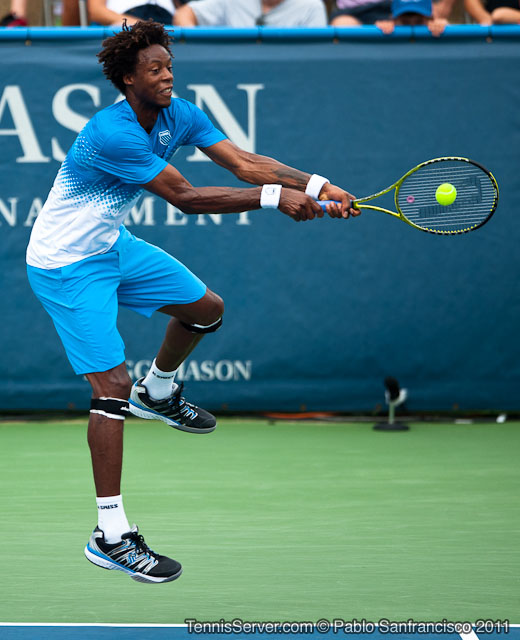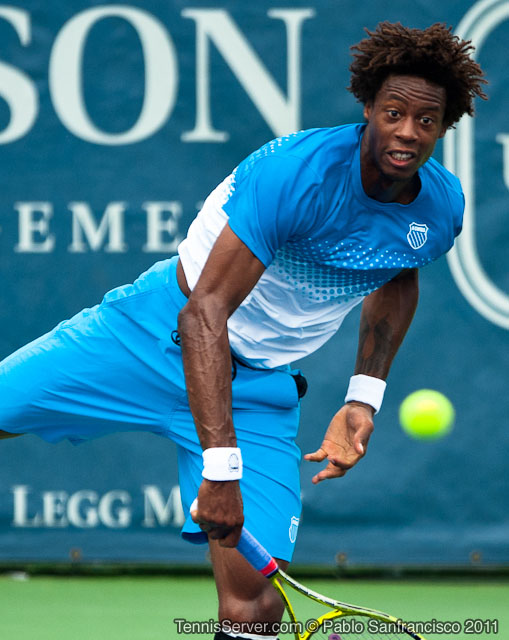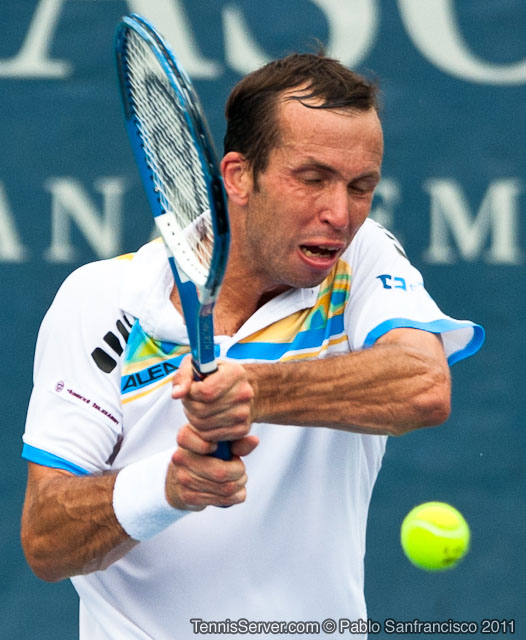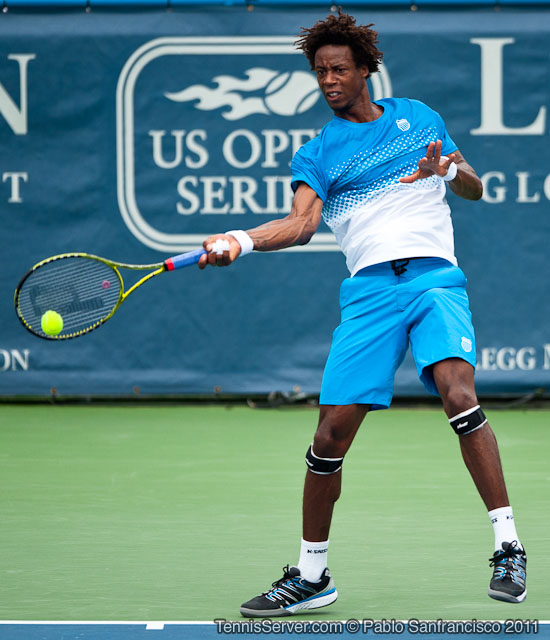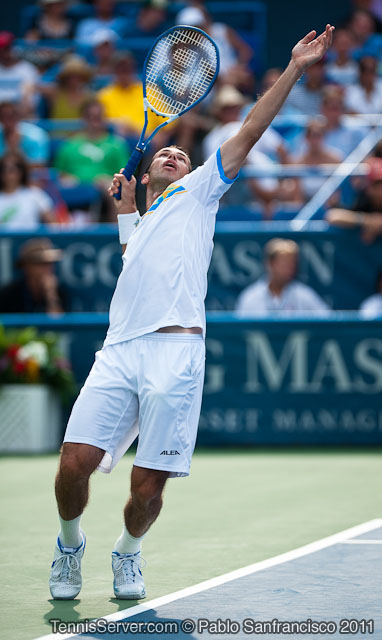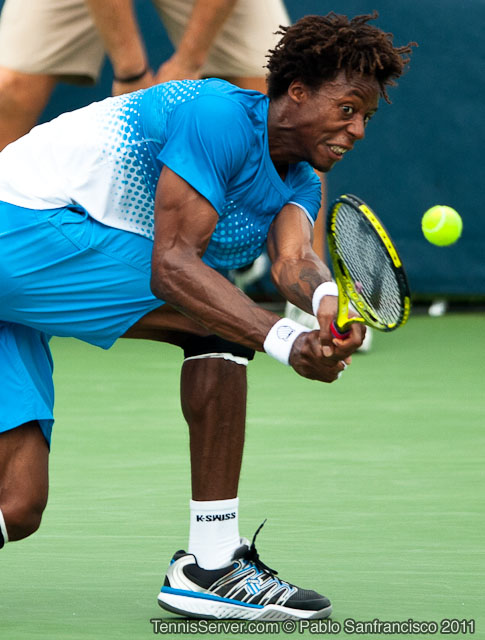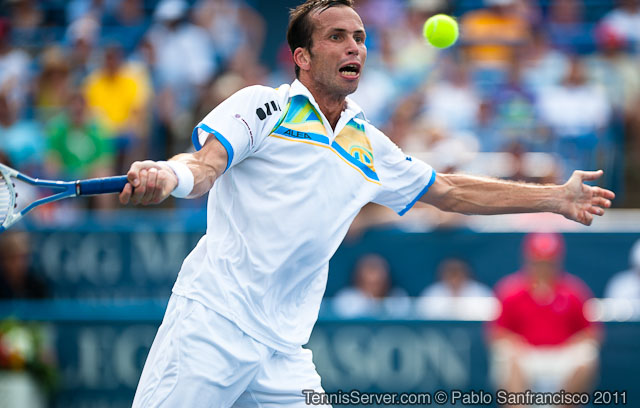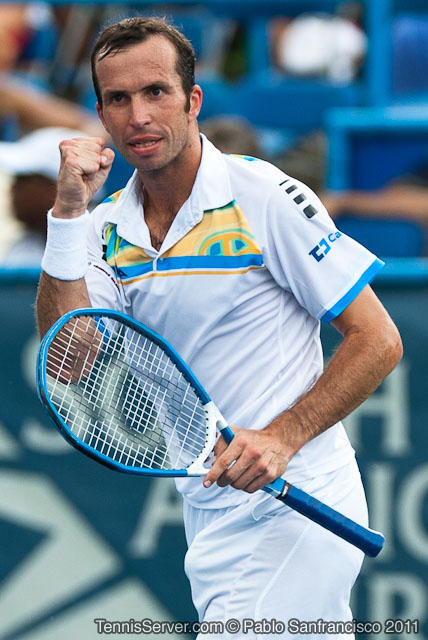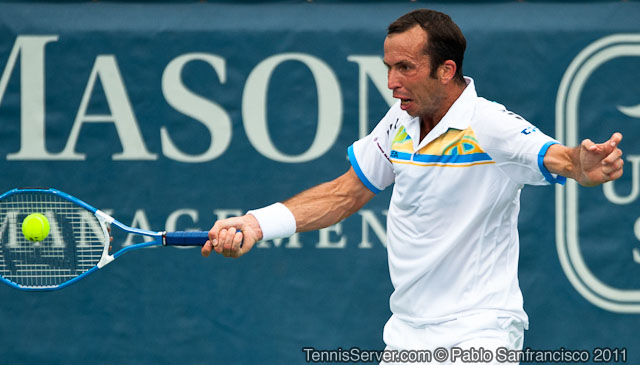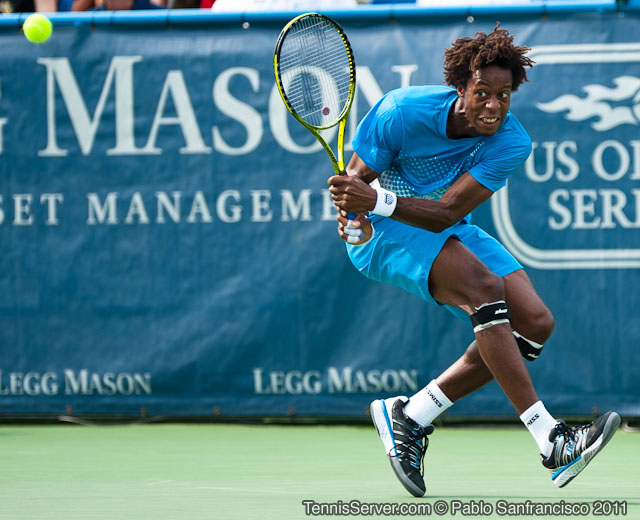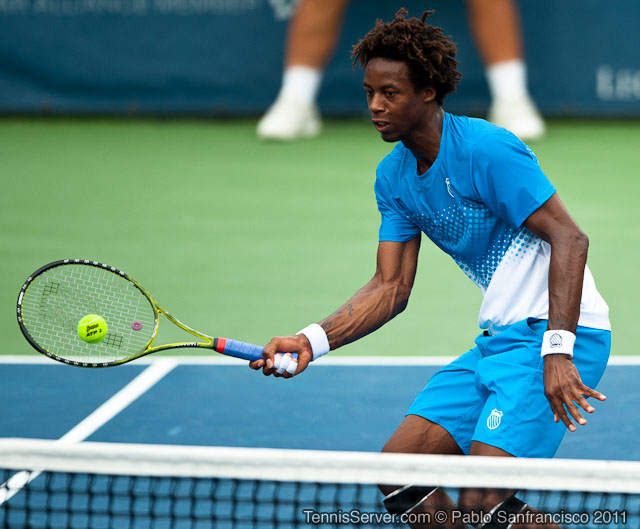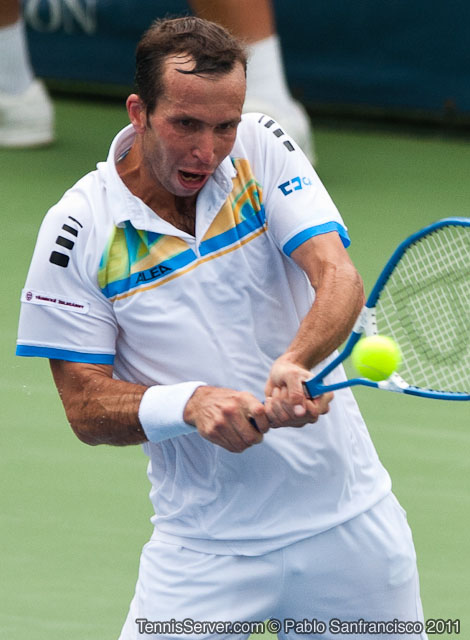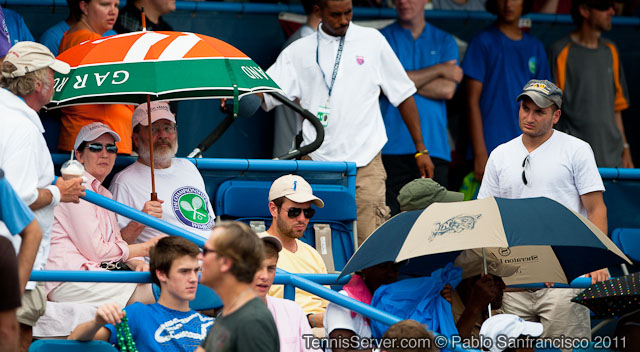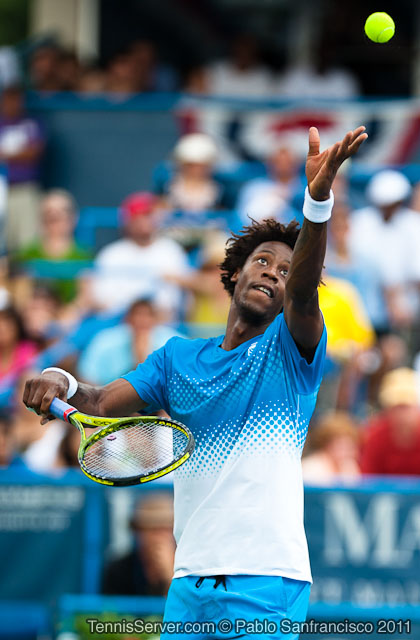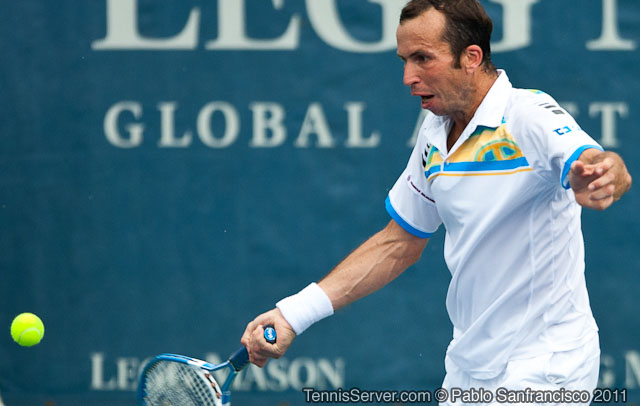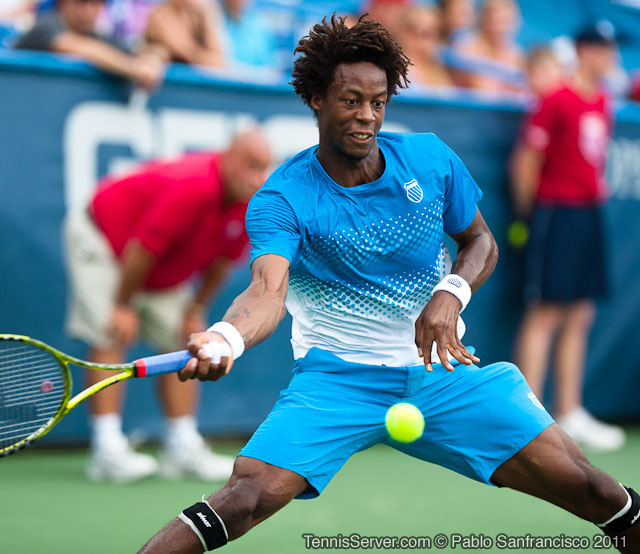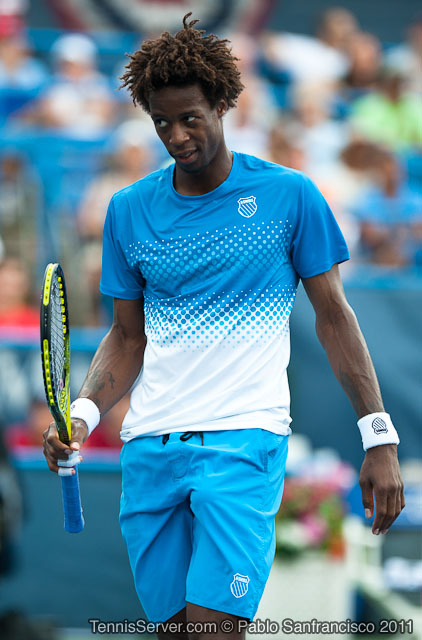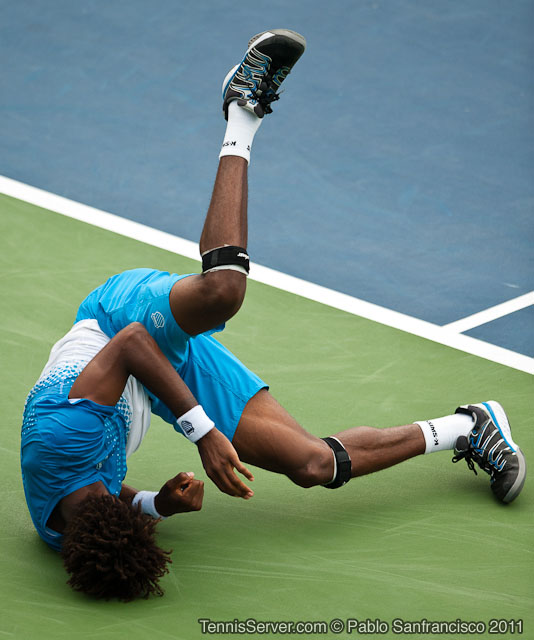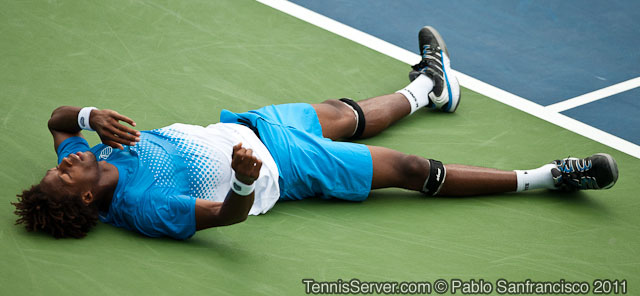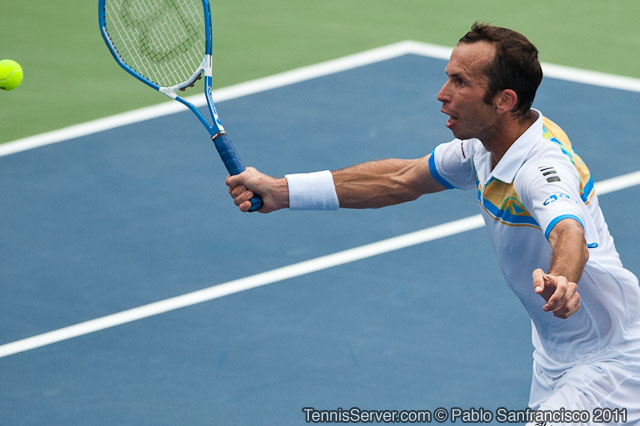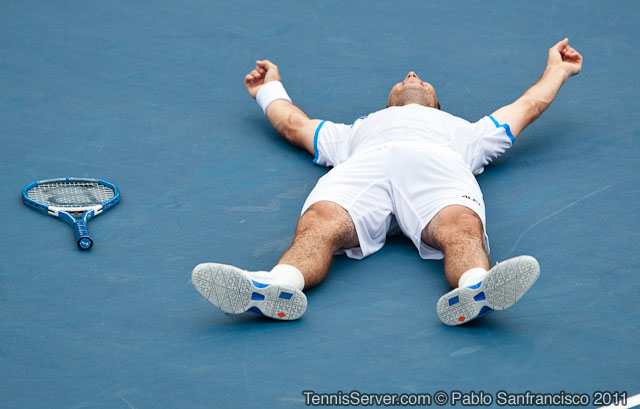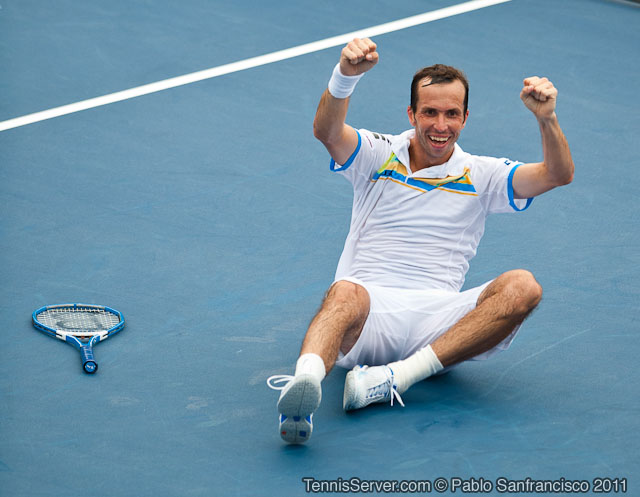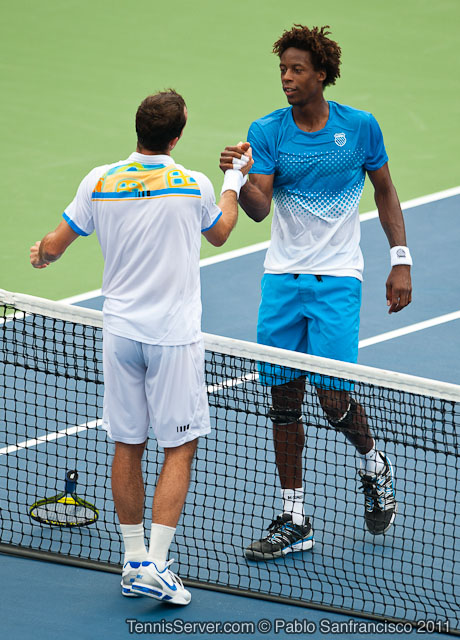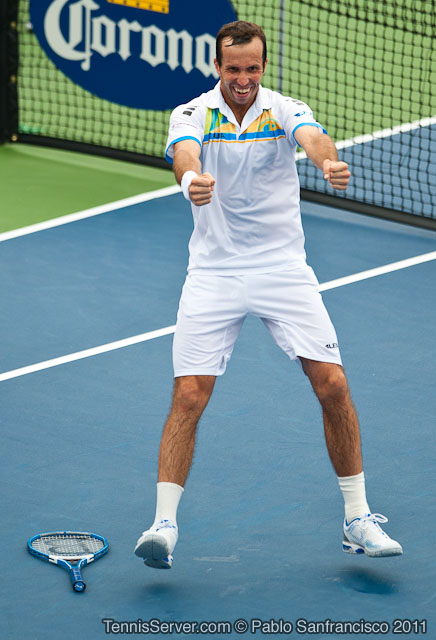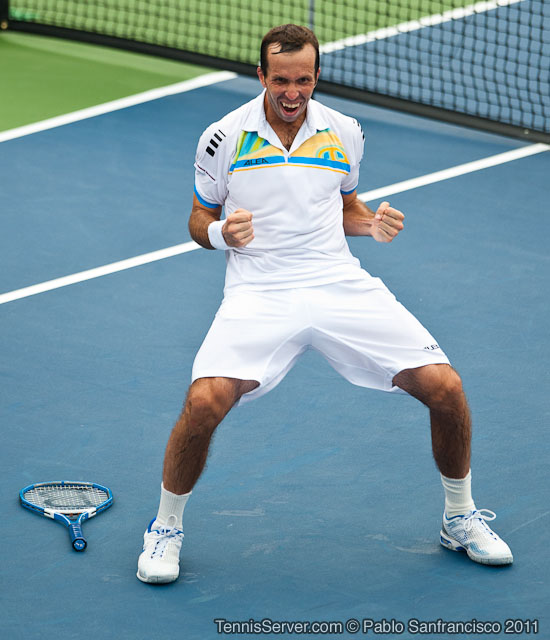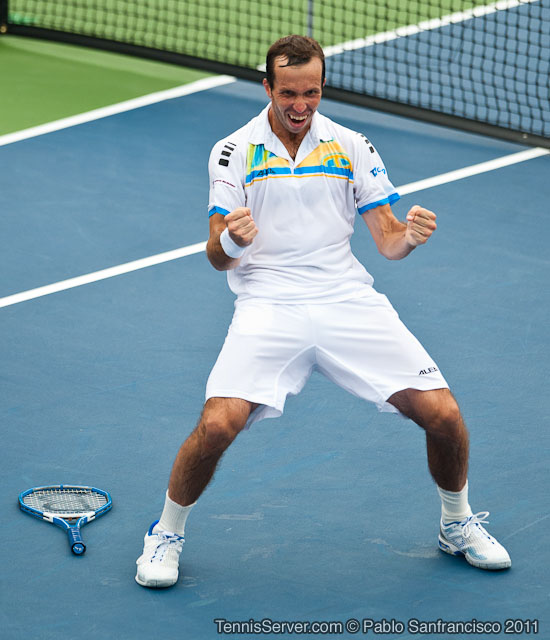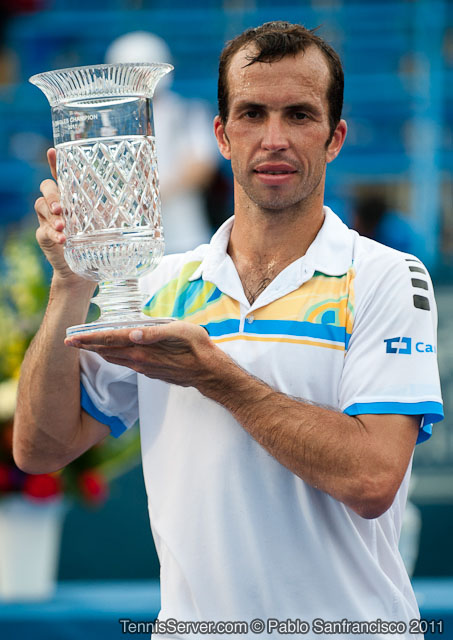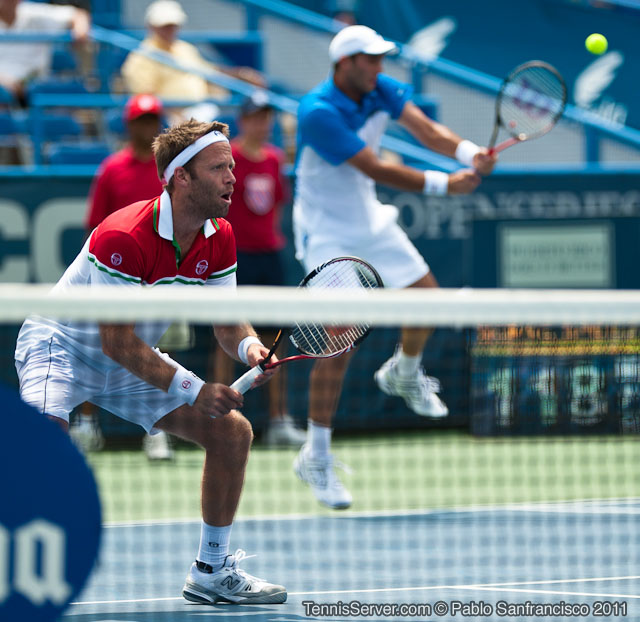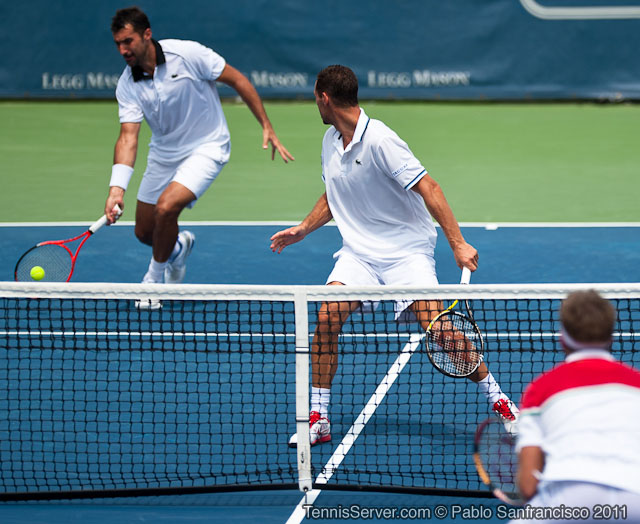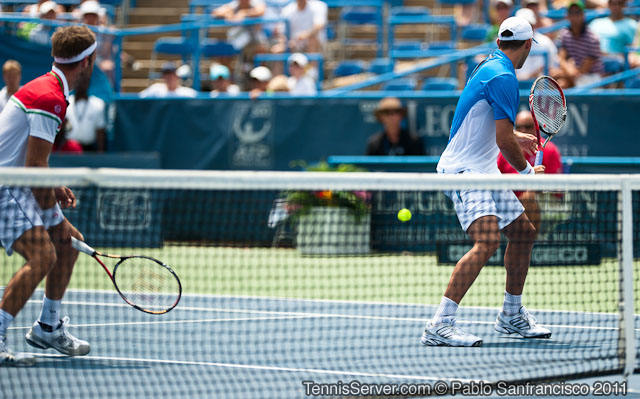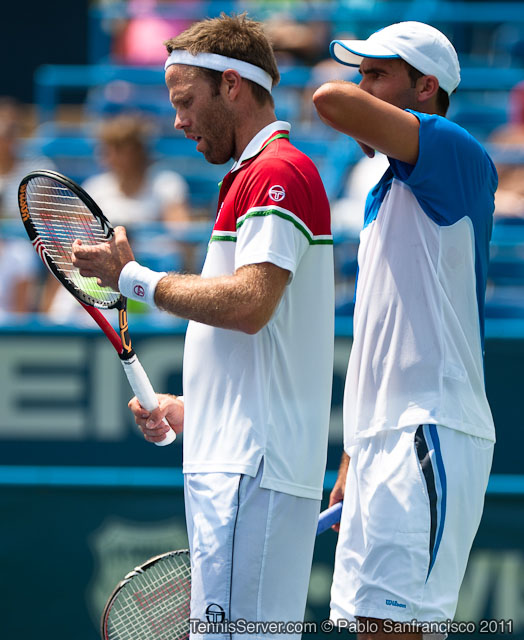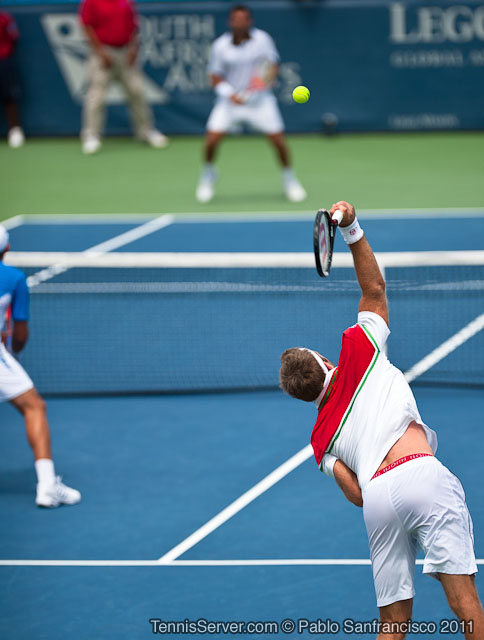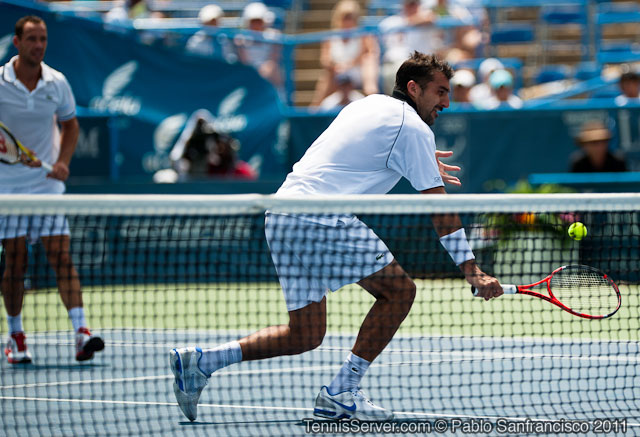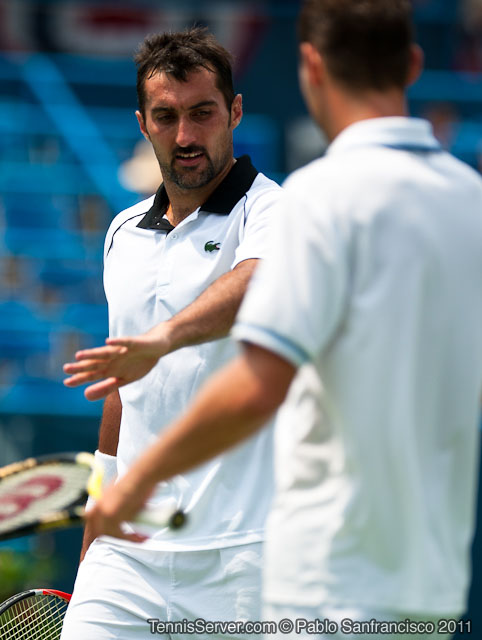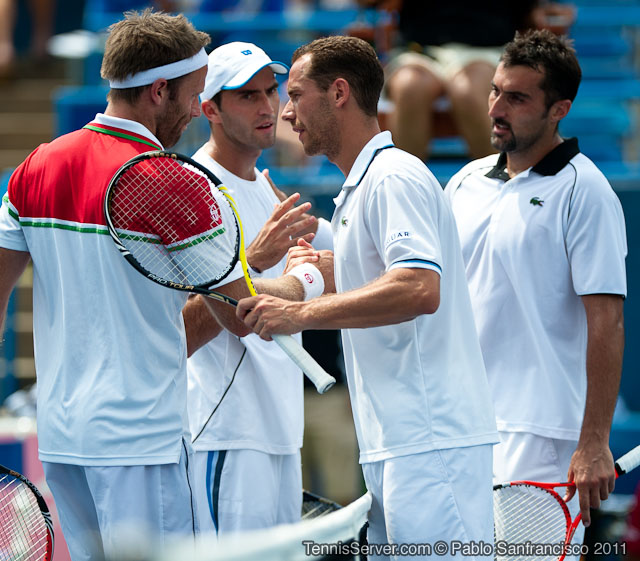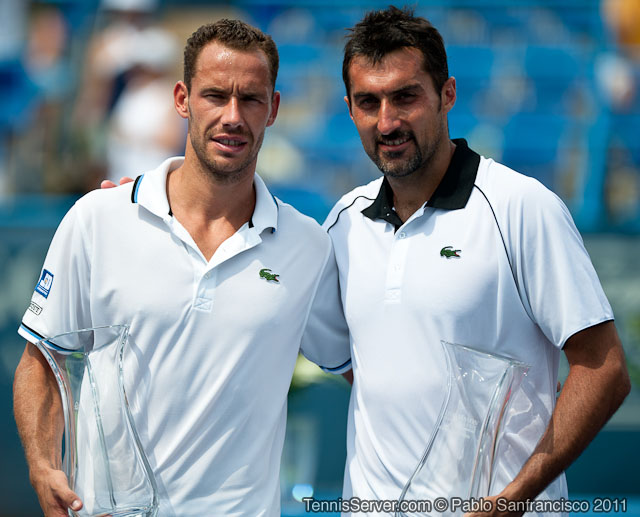|

 |
2011 Legg Mason Tennis Classic - Washington, DC, USA
August 7, 2011
Editorial By Ray Bowers. Photography by Pablo Sanfrancisco.

Ray Bowers |
Legg Mason Sunday Finals
By now, both singles finalists and their playing styles had become familiar to Stadium Court watchers. Unseeded Radek Stepanek, 32, had displayed his all-around skills, including considerable ability at net, along with the tennis intelligence to employ those skills effectively. Meanwhile Gael Monfils, 24, marvelously talented but who sometimes seemed like an untamed colt, had shown his blinding speed, his serving and striking power, and his often blithe court manner that seemed to imply confidence in his own weaponry. Gael was the favorite based on his superior ranking and a 5-2 edge in head-to-head outcomes, including a straight-set win last month in Germany on clay. He had stopped the run of John Isner here last evening, surviving an adverse match point.
The first break of serve came early. Monfils willingly provided Radek with attackable offerings, soft and down the center, probably expecting to run down Radek's approaches and take advantage of Radek's exposed court positioning. Gael learned the futility of that tactic quickly but not in time to save the game.
As expected, Radek tried to keep points short, meanwhile mixing up his deliveries to keep Gael out of rhythm. But the more important tactic gradually became apparent. It was not serve-and-volley tennis, as Radek seldom advanced directly behind serve. But again and again, throughout the full match, Radek would attack early in a point, plastering a forehand or pumping a perfectly leveraged backhand two-hander to the backhand side of Gael's court. Radek's advance to net then was swift and determined, and it was left for Radek's volleying and overhead abilities to finish matters, often requiring two or three well-placed volleys.
Radek used only a few drop shots, seen more often in his earlier matches, as Gael's speed and agility were too good. But Gael never found an answer to Radek's resolute net-attacking, even as the points won in this manner multiplied. Keeping Gael's own shots deep and to the sides sometimes worked, but often the only result was to delay the rush only briefly. In an earlier era, Gael's response might have been to attack net sooner than the opponent. But that style is not in Gael's make-up.
The second set likewise turned on a single early service break. By then, however, Gael's distress had produced many racket tosses and other negativity. Gael surely enjoyed the gallery's cheers after his several sensational retrieving points. But these too usually became points eventually lost.
For Radek it was a week to remember. For me, tournaments and matches that I watch gradually become hard to distinguish in recollection among many others. Stepanek's marvelous run here, however, will surely remain clear.
Earlier in the day I watched the doubles final -- Llodra-Zimonjic vs. Lindstedt-Tecau. Both Llodra and Zimonjic have had long careers with other partners as top doubles artists. This year they together reached the semis at Garros and Wimbledon. Meanwhile Robert Lindstedt of Sweden and Horia Tecau of Romania, both of them tall and strong right-handers, together reached the Wimbledon final in both 2010 and 2011.
Both pairs played modern, aggressive doubles, coming to net behind serves almost always and competing well for dominance at net center. As the match unfolded, Lindstedt-Tecau used the I formation in important situations, and in particular throughout the first-set tiebreak game, which they won.
I personally like the No-Ad rule used in the doubles here. As a serving game unfolds, the possibility of a service break is greatly increased if the receiving pair manages to win two points. Even if that creates score 30-40, servers become aware that a single mistake will now bring about the dangerous "Deciding Point." There were a total of eight Deciding Points in the match, six of them saved by servers, two of them resulting in service breaks. It was interesting to note that the receiving pair almost always chose its stronger player to receive -- Lindstedt for one pair, Zimonjic for the other.
Lindstedt's brilliance seemed clear most of the way, as his racket seemed to produce all good things for his pair. But upon reaching match point late in the second-set tiebreak game, Lindstedt to serve, it was Robert's volleying error that forfeited the opportunity. And it was an identical misfortune soon afterwards in the "Match Tiebreak" that gave Llodra-Zimonjic the mini-break advantage that they never relinquished.
I hope readers join me in appreciating the brilliant photo work by Pablo Sanfrancisco that supported, and were supported by, these commentaries.
Radek Stepanek (CZE) {white shirt} d [1/WC] Gael Monfils (FRA) 64 64
[3] Michael Llodra (FRA) / Nenad Zimonjic (SRB) {all whites) d Robert Lindstedt (SWE) / Horia Tecau (ROU) 67(3) 76(6) 10-7
Earlier Columns from this Event:
August 6, 2011 Legg Mason Classic: Radek Stepanek, Donald Young
August 5, 2011 Legg Mason Classic: Verdasco, Baghdatis, Troicki, Tipsarevic, Monfils, Isner, Stepanek, Young
August 4, 2011 Legg Mason Classic: Monfils, Isner, Blake, Young, Sweeting, Russell
August 3, 2011 Legg Mason Classic: Donald Young, Jurgen Melzer & Lots Of Rain
August 2, 2011 Legg Mason Classic: Harrison, Haas, Blake, Nalbandian, Zverev, Delic
August 1, 2011 Legg Mason Classic: Blake, Young, Stepanek, Petzschner, Sitak, Ito
  
Player Profile Index (Men) | Pro Tennis Showcase Archive | Player Profile Index (Women)
|
SUBSCRIBE TO THE TENNIS SERVER PHOTO FEED
|
All Tennis Server photography is copyrighted by the photographer and/or the Tennis Server, and all rights are reserved. You may not copy these images without permission. While you are welcome to create hyperlinks to Tennis Server web pages, you may not embed these images into other web pages or blogs without permission. To request permission, please use this contact form. Please be sure to clearly indicate exactly which photograph(s) you are requesting permission to use, as terms and conditions will vary depending on the photographer and the photograph.
|
 |
|

|





 You will join 13,000 other subscribers in receiving news of updates to the Tennis Server along with monthly tennis tips from tennis pro Tom Veneziano.
You will join 13,000 other subscribers in receiving news of updates to the Tennis Server along with monthly tennis tips from tennis pro Tom Veneziano. 
